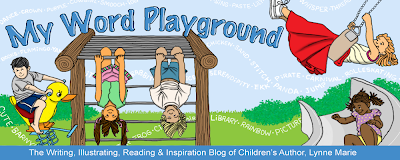
So, You Want To Be A Children's Writer? (Introduction to Children's Writing)
(c) 2000 Lynne Remick
You're starting out on a writing career, and don't have any experience. So, why not start with the easiest writing first? Yes,that's it...you'll start off writing for children. That ought to be a cinch! NOT SO FAST.
Contrary to popular belief, writing for children is NOT easy. As a matter of fact, children's writing is one of the toughest genres to crack, whether it be books, magazine articles, or poetry you will be writing.
STILL WANT TO BE A CHILDREN'S WRITER? Yes, you wereonce a child and you remember what it was like to be a child, (vaguely). However, having been a child is not enough. You must have strong connections with children, and that doesn't mean being a parent or grandmother, either. Do you read their books, do you hang out with them? Are you surrounded by them? Do you understand them and talk their lingo? Can you communicate with them without "talking down" to them? Do you feel that there's nothing better in the world than being with children?
If the answers to these questions are yes, then you're ready to move forward. I can assure you, it won't be easy, but it will be rewarding. Children's writers help shape the world, word by word, one child at a time.
YOU'RE STILL INTERESTED? That's great. You better be readyto put in an enormous amount of time, energy and effort. And, you better be able to take constructive criticism and rejection--these are essential conditions of being a writer in any genre.
NOW THAT YOU'VE COME THIS FAR, you're going to write books that all children will love. Right? Again, not so fast. The "writing for children" industry is broken down into several categories. Babies love to see and touch board books, babies and toddlers enjoy wonderful pictures and being read to by their parents, preschoolers have fun learning letters and sounds and reading words themselves. Young readers can read their favourite picture books over and over again. After that, there's "easy readers," chapter books, mid-grade books and young adult books, each geared specifically to a target age group.
SO, NOW WHAT DO YOU DO? There's no time like the present to make a trip to your local library and check out a few books in each of the above categories: Board Books (perhaps try "The Very Hungry Caterpillar Board Book" by Eric Carle or "The Little Engine That Could" by Watty Piper); Picture Books ("Sector 7" by David Wiesner is a great wordless PB -just in case you're interested in illustration, and "Miss Spider's Tea Party" is a favourite of many children); Picture Books for older children (try "Stellaluna" or "Verdi" by Janelle Cannon), Easy Readers (check out "Dinosaurs Before Dark" [First Stepping Stone Books] by Mary Pope Osborne, "The Three Little Pigs [Puffin Easy-To-Read, Level 2] by Harriet Ziefert, or " The Frog Prince [Hello Reader, Level 3] by Edith Tarcov); Chapter Books (look for Flat Stanley [Trophy Chapter Book] by Jeff Brown), a Mid-grade book (Gail Carson Levine's "Ella Enchanted" and the "Harry Potter" Books come to mind) and a Young Adult Book (Lois Lowry's "The Giver" is worth a try).
To get a real sense of the genre, you must try *many* books ineach category. Your local librarian should be helpful in making additional selections. Once you find an "age-group" that you feel comfortable with, try reading as many books of that nature as you can. Even when you begin the writing process, you should continue reading in your genre. I try and read a picture book a day!
What's your book for today?
Mine is "Crazy Day at the Critter Cafe" by Barbara Odanaka!
Enjoy the process!


No comments:
Post a Comment